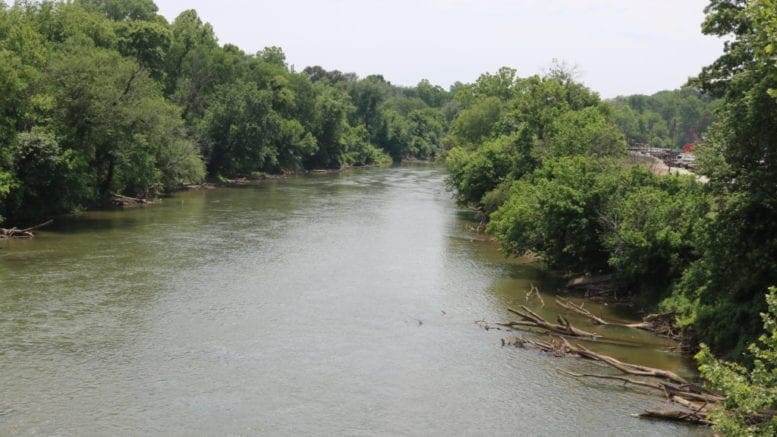by Li Li (李黎), Penn State, [This article first appeared in The Conversation, republished with permission]
As climate change warms rivers, they are losing dissolved oxygen from their water. This process, which is called deoxygenation, was already known to be occurring in large bodies of water, like oceans and lakes. A study that colleagues and I just published in Nature Climate Change shows that it is happening in rivers as well.
We documented this change using a type of artificial intelligence called a deep learning model – specifically, a long short-term memory model – to predict water temperature and oxygen levels. The data that we fed the model included past records of water temperature and oxygen concentrations in rivers, along with past weather data and the features of adjoining land – for example, whether it held cities, farms or forests.
The original water temperatures and oxygen data, however, were measured sparsely and often in different periods and with different frequency. This made it challenging before our study to compare across rivers and in different periods.
Using all of this information from 580 rivers in the U.S. and 216 rivers in central Europe, our AI program reconstructed day-to-day temperatures and oxygen levels in those rivers from 1981 to 2019. We also used future climate projections to predict future water temperature and oxygen levels. This enabled us to consistently compare past and future river water temperatures and oxygen levels across hundreds of rivers, which would not have been possible without using AI.
On average, we found, rivers were warming by 0.29 degrees Fahrenheit (0.16 degrees Celsius) per decade in the U.S. and 0.49 F (0.27 C) per decade in central Europe. Deoxygenation rates reached as high as 1% to 1.5% loss per decade. These rates are faster than deoxygenation rates occurring in oceans, and slower than those in lakes and coastal regions.
Urban rivers are warming up most rapidly, while rivers in agricultural areas are losing oxygen most rapidly. This could be partly due to nutrient pollution, which combines with warmer waters to fuel large blooms of algae. When the algae die and decompose, this process depletes dissolved oxygen in the water.
Why it matters
Oxygen is crucial for plants, animals, fish and aquatic insects that live in rivers. These organisms breathe dissolved oxygen from river water. If oxygen levels drop too low, river species will suffocate.
While scientists know that oceans and lakes have been losing oxygen in a warming climate, we have mainly thought that rivers were safe from this problem. Rivers are shallow, and fast-moving water can absorb oxygen directly from the air more rapidly than standing water. Rivers also harbor plants that make oxygen.
Chelsea Miller of the Maryland Department of Natural Resources explains why dissolved oxygen is important in aquatic environments and shows how researchers test for it.
The health of rivers affects everything in and around them, from aquatic life to humans who rely on the rivers for water, food, transportation and recreation. Warming rivers with low oxygen could suffer fish die-offs and degraded water quality. Fisheries, tourism and even property values along rivers could decline, affecting livelihoods and economies.
As the air warms in a changing climate, rivers will also become warmer. As a liquid’s temperature increases, its capacity to hold gases declines. This means that climate change will further reduce dissolved oxygen in river water.
At extreme levels, this process can create dead zones where fish and other species cannot survive. Dead zones already form in coastal areas, such as the Gulf of Mexico and Lake Erie. We found that some rivers, especially in warmer areas like Florida, may face more low-oxygen days in the future.
Low oxygen in rivers also can promote chemical and biological reactions that lead to the release of toxic metals from river sediments and increased emissions of greenhouse gases, such as nitrous oxide and methane.
What’s next
Most of our data on dissolved oxygen was collected during the day, when plants in rivers are actively making oxygen through photosynthesis, powered by sunlight. This means that our findings may underestimate the low-oxygen problem. At night, when plants aren’t producing oxygen, dissolved oxygen levels could be lower.
I see this research as a wake-up call for more study of how climate change is affecting river water quality worldwide. Better monitoring and more analysis can make the full scope of river deoxygenation clearer. Ultimately, I hope more research will lead to policy changes that promote responsible land use and water management and better stewardship of rivers, our planet’s veins.
The Research Brief is a short take about interesting academic work.
Li Li (李黎), Professor of Civil and Environmental Engineering, Penn State
This article is republished from The Conversation under a Creative Commons license. Read the original article.
